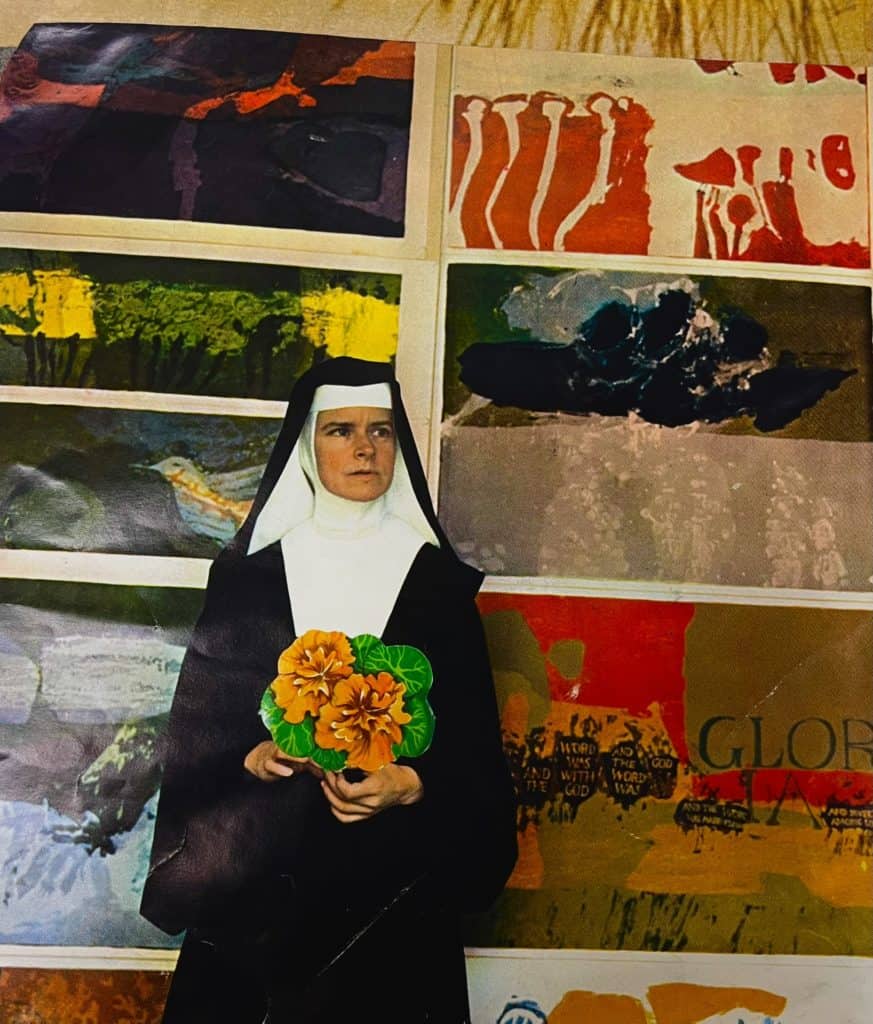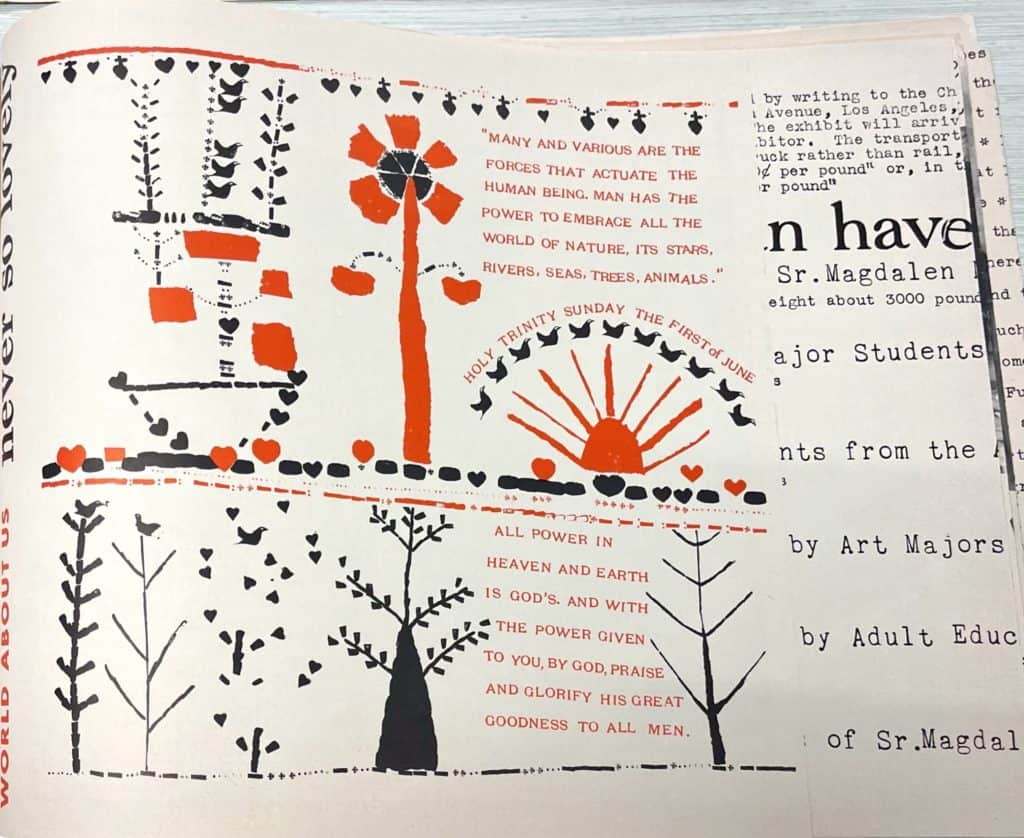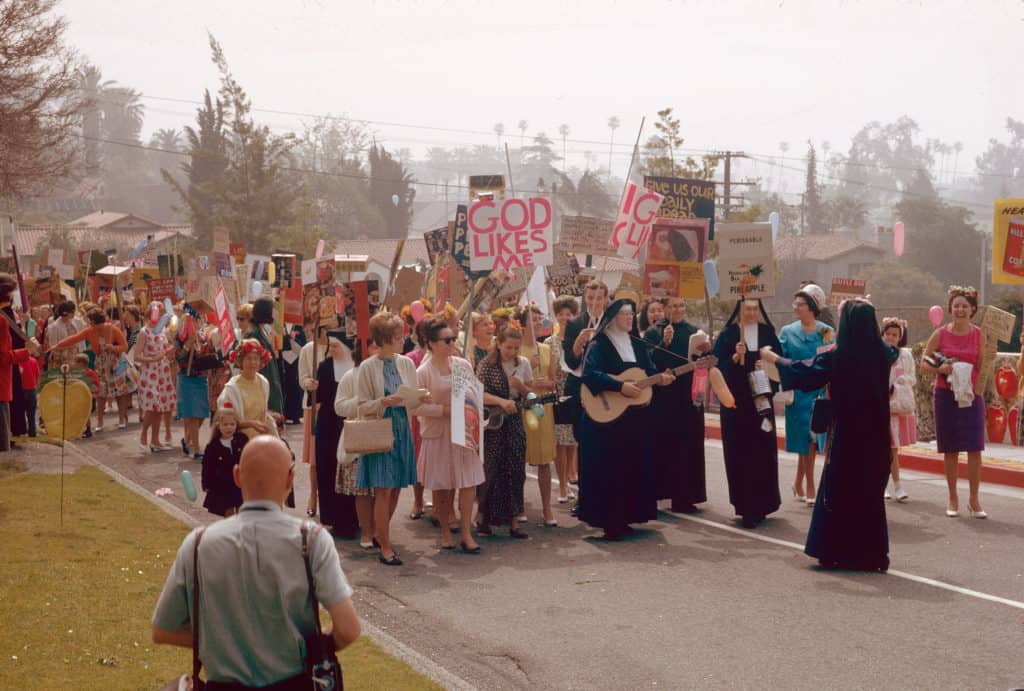The following is written by Olson Graduate Research Assistant, Kaylee Swinford.
Corita Kent was an American artist, educator, activist, and former religious sister. With a rebellious spirit, Corita was a pioneering designer, who produced a body of work for over three decades combining themes of spirituality, hope, peace, and acceptance. Inspired by the popular Pop Art movement taking hold throughout the 1950s–60s in America, Corita’s serigraphs, also known as screenprints, incorporated questions about racism, war, poverty, and religion through found text, images, and vibrant colors.
Corita, born Frances Kent in Fort Dodge, Iowa, in 1918, grew up in Los Angeles after her family relocated there when she was a young child. At 18, Corita decided to join the order of the nuns at the Immaculate Heart of Mary, providing her the opportunity to pursue art and higher education in a way that would not have been an option for many women in 1936. While here, she took the name Sister Mary Corita though wished to be referred to as Corita. As a member of the teaching order, she taught art education at various institutions while receiving an art education herself. In 1947, Corita was then asked to teach with the Art Department at the Immaculate Heart College where she would remain until 1968.
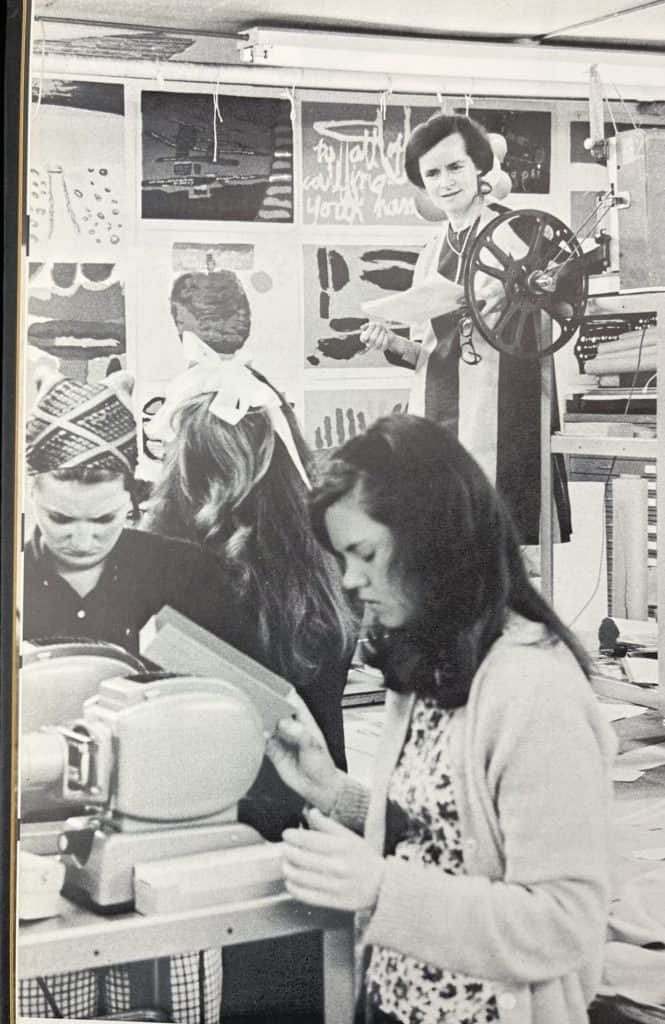
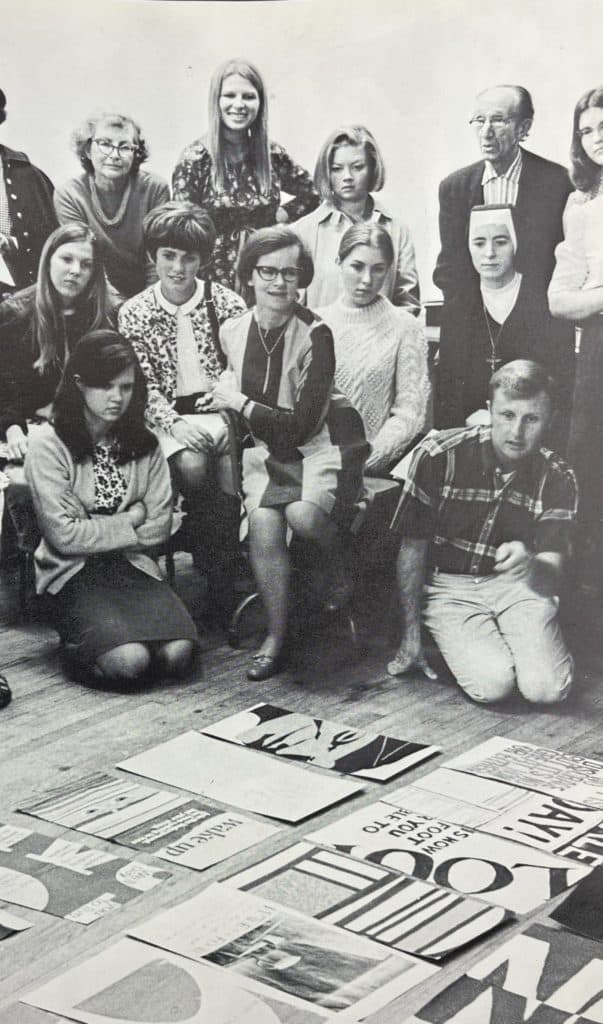
The Art Department at Immaculate Heart College was a space of growth and development for Corita. Here she would develop her art style, which in early stages often incorporated religious imagery, containing medieval-influenced figures, then later evolving to integrate a wider breadth of material like song lyrics, advertisements, abstract shapes, and brighter colors. While Corita was further developing her work, she was having a significant impact on her students, urging them to discover new ways of experiencing the world. Through exercises like exploring a grocery store for inspiration or looking through an empty 35mm slide mount to frame compositions, Corita’s approach to teaching inspired her students and led to a fruitful period of creation and exploration for Immaculate Heart College which drew national recognition. This influential impact can be seen in the work of Corita’s students of this time, found within the student’s pieces, as well as the Irregular Bulletin, a zine-like newsletter created by the art department to announce the activities and accomplishments of students and faculty.
Through rising tensions within the country from the United States’ involvement in the Vietnam War, Corita and her fellow sisters became more politically and civically engaged, participating in demonstrations throughout the city, and gaining a reputation as rebellious nuns. By 1968, the strain between the Immaculate Heart of Mary sisters and the Archbishop of Los Angeles was high, leading to the majority of the sisters dispensing with their vows, and Corita leaving LA for the East Coast. It was there Corita would continue to create under a more introspective style until her passing in 1986.
Within the University of Iowa’s collections, Corita’s work can be found through various published books, screenprints found both in the Special Collections and Archives as well as the Stanley Museum of Art, and an intimate manuscript collection from a former student, her mentee and friend, Josephine Pletscher. Pletscher, with a long-lasting connection to the Immaculate Heart College, amassed a thorough collection, not only regarding the Immaculate Heart, but also Corita and her career. Incorporating correspondence, serigraphs created both by Pletscher and Corita, as well as Corita’s personal rosary beads, the care and connection between the two women is evident.
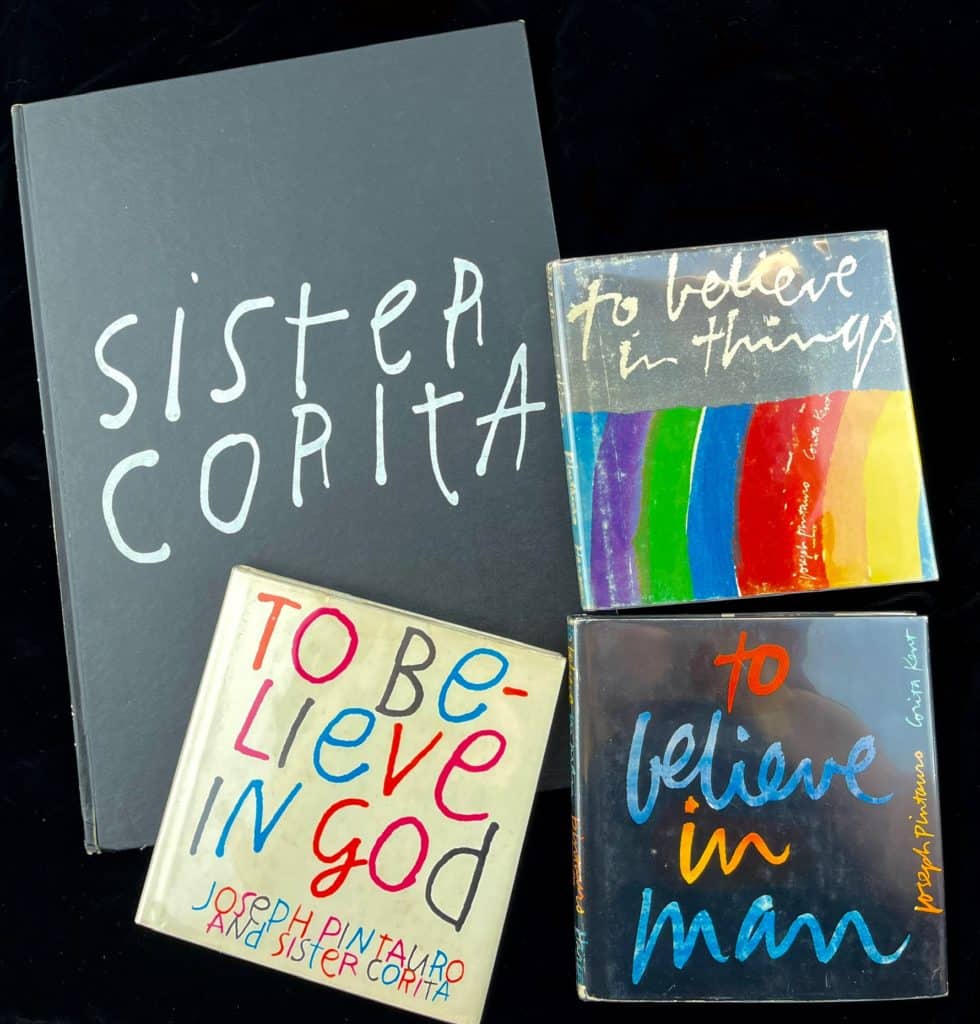
With impactful messages that continue to resonate today, Corita’s work reminds viewers to reflect upon and explore the world around them. Just as she imparted to her students, great strength comes from opening oneself to new possibilities.
To learn more, visit us in person to view the published Corita Kent printed materials within the collection, or visit the finding aid for the Josephine Pletscher Papers (IWA0913) which can be viewed in person at the Iowa Women’s Archive. Additional information about Corita and her work can be found at Corita.org.

